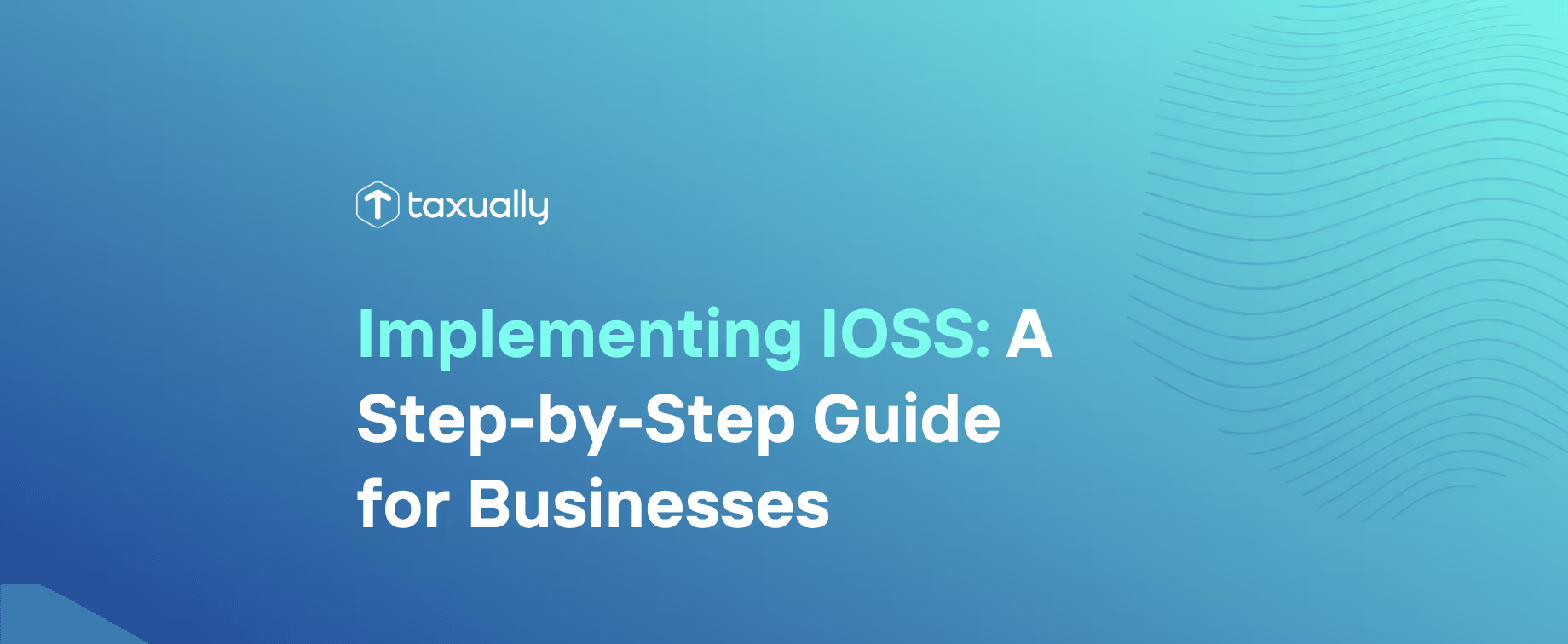Key takeaways
- Simplify EU VAT compliance: The IOSS scheme streamlines VAT collection and reporting for ecommerce sellers importing goods under €150 into the EU.
- Register and automate VAT reporting: Sellers can register for an IOSS number to declare VAT through a single portal, improving efficiency and accuracy.
- Enhance customer experience: Using IOSS avoids customs delays and unexpected charges, creating a faster and smoother buying process for EU customers.
The world of ecommerce has expanded exponentially over the years, allowing businesses to reach global markets with ease. However, this growth also comes with new challenges, especially when it comes to international tax regulations. To combat this, the European Union introduced the Import One Stop Shop (IOSS) in 2021 to assist companies with their tax optimization. Here’s our step-by-step guide on how to navigate IOSS and ensure VAT compliance for your business.
Step 1: Assess your eligibility
The IOSS is an EU initiative aimed at simplifying the collection, declaration, and payment of value-added tax (VAT) for ecommerce businesses. Any seller that imports goods into the EU with a value of €150 or less can register for the IOSS scheme and use the electronic portal. While not mandatory, IOSS has many tax optimization advantages, allowing sellers to collect and remit VAT at the point of sale, avoiding customs delays, and ensuring a smoother customer experience.
Step 2: Register for IOSS
To participate in the IOSS scheme, you must register for an IOSS identification number. The registration process varies depending on your location and the EU Member State through which you choose to register. Typically, you’ll need to provide information about your business, such as your legal name, address, and VAT number. You’ll also need to appoint an EU-established intermediary to fulfill certain obligations on your behalf if your business isn’t based in the EU.
Step 3: Integrate IOSS into your ecommerce system
Once you’ve obtained your IOSS identification number, it's time to integrate IOSS into your ecommerce system. This involves making necessary adjustments to your website or marketplace to collect and display the correct VAT amount at the point of sale. You should also ensure that your system is capable of generating and transmitting IOSS-compliant invoices to your customers.
Step 4: Collect VAT from customers
With the IOSS scheme, you’re responsible for collecting VAT directly from your customers. When a customer places an order, you must charge the applicable VAT rate based on their location within the EU. Regularly compile and maintain records of your IOSS transactions, including the VAT collected and the customer's shipping address, to facilitate accurate reporting.
Step 5: Submit IOSS VAT returns
Once registered on the IOSS portal, you’re required to submit regular IOSS VAT returns to the tax authority of the EU Member State where you registered. These returns must include details of the VAT collected and declared for each transaction, as well as any adjustments or corrections. Be sure to meet the specified deadlines for filing your IOSS return and paying the VAT due.
Step 6: Monitor and stay compliant
IOSS regulations may evolve over time, so staying informed and monitoring any updates or changes is essential. Regularly review your processes and systems to ensure ongoing compliance with IOSS requirements. Keep track of changes in VAT rates, thresholds, or reporting obligations to avoid any potential non-compliance issues.
Conclusion
At Taxually, we can take care of the IOSS tax optimization process for you with our comprehensive IOSS service. For assistance with IOSS and other VAT compliance needs, book a free call with one of our VAT experts. We can offer bespoke solutions for your business, optimize your VAT costs, and help you reach millions of new potential customers.
Frequently asked questions
New Year's Day - 1/1/2024Memorial Day - 5/27/20244th of July - 7/4/2024Labor Day - 9/2/2024Thanksgiving Day - 11/28/2024Day after Thanksgiving - 11/29/2024Christmas Eve - 12/24/2024Christmas Day - 12/25/2024
What is the Import One Stop Shop (IOSS)?
The Import One Stop Shop (IOSS) is an EU VAT scheme that simplifies how ecommerce sellers declare and pay VAT on goods imported into the EU valued at €150 or less. It allows businesses to collect VAT at the point of sale and remit it through a single EU tax portal, reducing customs delays and improving the customer experience.
Do I need to register for IOSS to sell in the EU?
IOSS registration isn’t mandatory, but it’s highly recommended for non-EU and EU-based sellers who import low-value goods. By registering, you can handle VAT in one place instead of multiple countries, making compliance faster and easier.
How do I register for an IOSS number?
To register, you’ll need to choose an EU Member State and submit your business details, such as your legal name, VAT number, and address. Non-EU sellers must appoint an EU-based intermediary to manage IOSS filings on their behalf.
How do I submit IOSS VAT returns?
IOSS VAT returns are filed monthly through the tax authority of the Member State where you registered. Your return must include all transactions, VAT collected, and any adjustments. Be sure to file and pay on time to stay compliant.
What are the benefits of using IOSS for my ecommerce business?
IOSS simplifies VAT collection, reduces administrative costs, and speeds up customs clearance. Customers benefit too — they pay VAT upfront, avoiding unexpected fees or delays at delivery.



















